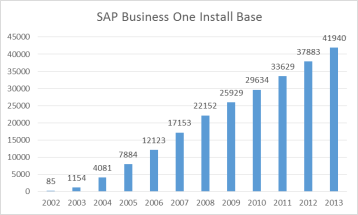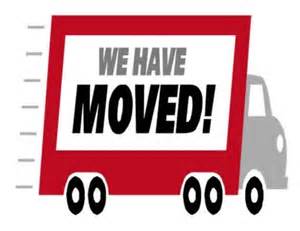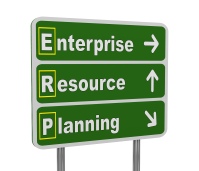We have moved our blog! Please come and visit us at http://www.i-bn.com/blog/.
Archive for the ‘Tehcnology Trends’ Category
We Have Moved!
October 7, 2014SAP’s HANA Powering Your Business to the Next Level
June 30, 2014 Meet HANA, the latest database technology to be offered by SAP designed to bring you greater agility in speed and information like never before. There is a lot of information out there, so let’s focus on the “what” and “why” of HANA for your business.
Meet HANA, the latest database technology to be offered by SAP designed to bring you greater agility in speed and information like never before. There is a lot of information out there, so let’s focus on the “what” and “why” of HANA for your business.
What is HANA?
In simple terms HANA is an innovation tool designed to manage high data volume at high speed, provide data for complex analysis, and allow you the ability to work with anyone, from anywhere in a simplified platform.
Why should I use HANA?
HANA has four ways to immediately impact the way you do business on a daily basis. HANA is for businesses that want to control and plan their workflow and eliminate a reactive business model. You can use analytics to predict your volume and plan the steps needed to support it.
Agility: Get it all and get it fast. HANA’s in-memory computing means that it can organize massive amounts of data and return it to you in real-time so that you can plan and prioritize the next steps using this data.
 Analytics: Dashboards operate in real time providing a solid foundation for planning and forecasting. Use analytics to forecast cost, revenue, sales volume, manufacturing requirements, etc. Analytics are highly scalable with out of the box applications and the option to customize to get the exact information you want.
Analytics: Dashboards operate in real time providing a solid foundation for planning and forecasting. Use analytics to forecast cost, revenue, sales volume, manufacturing requirements, etc. Analytics are highly scalable with out of the box applications and the option to customize to get the exact information you want.
Efficiency: Everything is faster and more effective with HANA. Increase employee productivity with the use of freestyle search, styled like Internet searching, with the power to filter and sort results. Users can create and run reports without IT support. Freedom from IT staff means you can focus your efforts on planning and implementing actions that support your bottom line.
Value: SAP has priced this technology with the small and mid-size business in mind. With no additional cost in licenses or hardware, you can be up and running at a reasonable cost.
Stay tuned for our next blogs where we will dive a little deeper into each of the ways that HANA brings value to your business. Visit our website at www.I-BN.com. Need more information? Call or Email Jan Lawrence, sales executive, at 678-524-9442 or jlawrence@i-bn.net.
I-Business Network (I-BN) is an SAP Gold Partner providing SAP Business One since 2003. Established in 1999, I-BN has provided cloud hosting and business solutions including industry solutions for distribution, light manufacturing and professional services.
Cloud ERP in 2015 and Beyond
June 30, 2014Many Enterprise Resource Planning (ERP) system providers feel cursed by the Chinese proverb, “may you live in interesting times.” The reality is that this curse has no real Chinese source, and times of change are opportunities for both our industry and customers.
ERP is the buzzword that supplants the old term “accounting software” due to the inclusion of many operational planning tools such as forecasting and Material Requirements Planning (MRP). These enhanced functionalities required more access to more data to provide forward looking information for management. To have all this data available, software companies added more feature, function and complexity to the systems in an effort to provide more value.
In recent years these systems have been more frequently setup and hosted in a third party data center or “cloud” to remove the complexity of managing these systems from the companies who need the information but don’t need to focus on information technology as a core competency. The real curse is the complexity of operating the software to provide the information.
 There is always a balancing act between complexity and usability. We want the information and we want the systems to be easy to use. Many cloud service providers are touting that they have achieved the nirvana of easy to use, complex software via the latest technology. The reality is that “easy” is in the eye of the user and there is no Staples Easy Button for ERP.
There is always a balancing act between complexity and usability. We want the information and we want the systems to be easy to use. Many cloud service providers are touting that they have achieved the nirvana of easy to use, complex software via the latest technology. The reality is that “easy” is in the eye of the user and there is no Staples Easy Button for ERP.
Part of the balancing act is getting all the users to put data into a format that it can be easily consumed by different managers and workers for their purposes. A financial manager wants to see a pipeline for cash flow where a sales manager wants to know how effective the sales process is and to evaluate his staff. Financial terms are “easy” for an accountant that demands debits equal credits in the ERP system while process automation is important for the sales manager in his Customer Relationship Management (CRM) system which was engulfed in the ERP platform.
There is always a pendulum swinging between centralization and decentralization, whether in government, management or software. A recent report by Gartner proclaimed that the concepts of ERP are “being replaced by the emergence of cloud point solutions that deliver functionality business users want that the IT-controlled and centrally-mandated ERP megasuite previously struggled to deliver.” The concept is that point solutions will be easier to use and more functional than the mega systems that try to handle all functions for all users.
Remember the curse and beware of the pendulum. The reason ERP systems came to such popularity is the availability of information for decision making! If the point solutions are not integrated, then silos of data and operational inefficiencies will creep back into your business. This is why we at I-BN have always looked at change as opportunity and tend to not allow the pendulum to swing too far for our customers. Formed in 1999 with the mission of aggregating and integrating technology into solutions to make our customer’s operations more efficient, I-BN’s objectives of automation through technology have not changed.
So for 2015 and beyond, I-BN is investing in our integration platform to bring ERP and cloud applications together as packaged solutions for our customers. With over 15 years of experience working with Small to Mid-size Business we take the “best practices” concepts embodied in ERP and apply them to integrating best of breed solutions. One recent example is the creation of an eCommerce integration package for Shopify to Sage 100 ERP and Shopify to SAP Business One. This new cloud service takes a best of breed eCommerce platform and automates the entry of web orders while synchronizing customer and inventory data with the ERP system. These packages will be on display at Sage Summit 2014 in Las Vegas in July and at the America’s SAP User Group Business One Summit in Chicago in September.
I-BN views the forecast for Cloud ERP in 2015 as partly cloudy and very sunny with a very good chance of business improvement!
Outgrowing Entry Level Software
June 19, 2014 Growing out of entry level software, such as QuickBooks, Sage 50 or Xero, is a great problem to have. It means you have grown and may be ready to graduate to the next level as a business. First, ask yourself if you can relate to the following signs you have outgrown using your entry level software:
Growing out of entry level software, such as QuickBooks, Sage 50 or Xero, is a great problem to have. It means you have grown and may be ready to graduate to the next level as a business. First, ask yourself if you can relate to the following signs you have outgrown using your entry level software:
- Has data become unmanageable? Do you have access to information you need in real time?
- Is performance suffering?
- Is data corrupting?
- Are you supplementing your entry level software with Excel
- Do you need to import or integrate data from outside systems?
- Do you need more users?
- Is your system a glorified check writer?
- Does it take too long to bill clients and close the books?
If you find yourself answering “yes” to many of these questions, it is time to consider a business management software system. The first thing to know about this process is that, change is hard. As you investigate the numerous available options, you will need to define the long-term functionality of your system. Choosing a system that can grow with you means you won’t be going through this process again in the near future.
Enterprise Resource Planning (ERP) software is a comprehensive business management system which includes more functionality than an entry level system. Most entry level systems focus on accounting and basic inventory management functions, where ERP typically includes the sales, distribution, manufacturing and other processes in a single system. Choosing an ERP system means investing a lot of time and money, so making sure you have the right vendor with the right system is very important.

Choosing a System
There are several things to consider when you choose your ERP system. Defining the company goals first will help you define the features of your ERP system. First ask yourself, “What are my business goals.” Then ask, “What are the “must have” features? Do I need industry-specific capabilities? Knowing your goals helps to define the type of system you need and how much scalability you are likely to need in the future.
When looking at new systems, it is also important to have a budget in mind. The budget should be set based upon the potential value you can derive from having a completely integrated system. For example, how much time or money can we save by having orders flow directly from our eCommerce site into our ERP system. Or, how much could we increase sales with integrated customer relationship management software? The budget should be set in perspective to the value to be derived over a reasonably short timeframe.
Best practices tell us that defining the functionality of your system is the primary concern during the selection process. Getting input from a team of individuals ensures that the focus is on full functionality. Creating a team including those who will be working in it on a daily basis, those who will help to maintain the system, and peripheral users throughout the company is advisable. Each of these individuals will:
- be able to contribute to the value/budget definition,
- have different needs to meet, and
- will use the system in different ways.
Now that you have defined the features, industry criteria and budget, it is time to ensure the goals of the company are supported by the ERP system. Can the system perform as promised and meet the criteria of functionality of your business? Can your employees intuitively use the system?
Choosing a Vendor
It is important to point out that all vendors are not the same. Defining the capabilities of your vendor can make a big difference when you really need it. Some questions to keep in mind while looking for the right vendor:
- Can your vendor provide real world advice on your software?
- Can they provide quality customer support?
- Do they understand your industry-specific needs?
- Do they know the needs of small businesses?
- Are they well-informed on the scalability and integration capabilities for your ERP?
- What do they know about working in or with the cloud?
- Do they have any references?
We know that the above is a lot to consider and we want you to have all of the tools necessary to make this journey pain free. Remember to create a plan and work your way through it. Get advice from others in your industry. Call industry professionals like us. I-BN offers a ½ day workshop to help you determine whether you should consider upgrading and outline your value/budget definition! Call Jan Lawrence at 678-627-0646 x249 for more information.
I-Business Network (I-BN) is an ERP and cloud solutions provider since 1999. Established by professionals in the accounting and software industry, I-BN has provided cloud hosting and business solutions including industry-specific solutions for distribution, light manufacturing and professional services.
SAP Drives Growth via Cloud, Analytics, and Partner Solutions
June 9, 2014SAP held its first Business One (B1) focused innovation summits in Miami and Bratislava this year to showcase the continuing investments in the product and underlying technology. As B1 heads into its 13th year, SAP has clearly embraced the product and integrated Business One into its overall strategy at the highest level.

SAP has evolved from its root as a business software application company to a cloud and platform powerhouse. Its strategy of in-memory cloud computing connected to a mobile workforce was never more clearly stated than at the recent events. Powerful analytics with easy to use interfaces were showcased running in the B1 HANA powered version of the software.

Sales of B1 have been strong and steady, but SAP is always looking to faster growth. With a stated board level ambition on 1 Million Customers, SAP is looking to its partner community to embrace the new Cloud platform and HANA in memory computing to drive volume and velocity. Cloud is no longer the hot new topic, and in-memory computing sounds cool, but technology is just a tool and customers need solutions. SAP realizes that buzz words don’t solve business problems – partners do. At the recent Sapphire interviews, Rodolpho Cardenuto, SAP’s new head of Global Partner Operations stated, “I want the partners to touch 100 percent of our business. Our customers need them.”
Rinse Tamsma, Global SAP Vice-President Sales Business One, laid out a clear direction for how SAP B1 will be delivered to customers from the extra small (<10 employees) through the large enterprise via a combination of Cloud, vertical industry solutions, and partner delivered custom solutions. Partners like I-BN are a key component of the strategy by providing the multi-tenant, multi-partner cloud platform that powers both the small and extra small market segments. These customers can grow into private clouds tailored to their specific needs supported by a large community of Certified Software Solution Partners.
In order to make the powerful B1 solution affordable, I-BN developed the Start & Grow rapid delivery model supported by a pre-configured system and a comprehensive coaching system that transitions customers from entry level packages like QuickBooks and Sage 50. SAP is supporting these efforts with its investments in the B1 Solution Packager and new tools that make tailoring the user interface simpler and match the solution.
After the conference, Gary Feldman, President of I-BN commented that, “The current SAP leadership team has embraced the small to mid-size business market and understands that this “SME market” is really comprised of a number of markets.” Mr. Feldman concluded that, “The Innovation Summit proved that I-BN was well aligned with SAP to deliver upon the promises offered to business by Cloud, HANA and the value of ‘big data.’ ”
For more information on cloud computing and SAP Business One, please contact Jan Lawrence via email at jlawrence@i-bn.net or by phone at 678-627-0646.
SMB Technology: Mind, Matter, Money–and the Cloud
March 19, 2014Laurie Macabe has a great summary blog post on the state of the SMB market. SMB Technology: Mind, Matter, Money–and the Cloud. In this study small businesses are defined as 1-99 employees and medium sized 100-999
Top SMB Business concerns have shifted from survival to revenue growth according to the 2014 SMB Study with biggest concerns coming as:
- Attracting new customers
- Growing revenue
The study also talks about SMB’s moving to the cloud for the lower up front costs and elimination of technology barriers. Our experience that the lower up-front costs come from more than just shifting costs from perpetual to subscription licensing but through pre-configuration and other packaging services.
For example: An SMB that wants to increase revenue and attract new customers decides to look into eCommerce. The benefit of the cloud comes int play when the ERP system (existing or new) has a pre-built hook into a leading eCommerce platform such as Magento or Shopify. These packages result in rapid deployment at a fixed low cost for a standard scope of work.
To learn more about I-BN’s packages solutions contact Jan Lawrence (jlawrence@i-bn.net) at 678-627-0646.
How Complex is the Cloud?
February 26, 2014A recent article in the Wall Street Journal “The Problems With Heading Into the Cloud” identifies several “new” issues that are associated with companies moving into the cloud:
- Increased bandwidth requirements
- Data and privacy protection in the cloud
- Vendor lock in.

It is surprising that some of these arguments are sighted as:
- bandwidth speed has increased over 10 fold in the past few years,
- data security and privacy has become a much smaller concern as familiarity with the redundancy and replication procedures in the cloud have become better understood
The article correctly points out, regardless of what applications and data are in the cloud, a company must setup and maintain local devices to access the cloud and peripherals like printers and bar code scanners.
A recent Gartner survey found “integration and customization” are the top cloud concerns. Security is still an important issue, but dropping in significance.
Small Business cloud applications are typically inexpensive, easy to use and out-of-the-box. These applications are well suited for companies with standard business processes that can use the built in features and functions offered.
As companies grow and evolve, complexity in the business often decreases the effectiveness of the systems unless they offer a high degree of flexibility. This flexibility can come in the form of configuration flexibility, customization or integration.
The complexity of implementing systems in the cloud is directly related to the complexity of the business systems required by the business. The complexity to the company using the cloud is directly related to the cloud providers, software companies and service providers selected.
If a generic cloud provider (Amazon, Rack Space, Azure, etc.) is utilized, the company is buying a technology platform outside its premises. In these environments the complexity and management of IT is still the responsibility of the consumer. Niche cloud providers like I-Business Network typically remove cloud management from the equation
If an cloud application (NetSuite, Salesforce, Business One Cloud, etc.) is selected, installation and maintenance of the application is now provided by the platform. Configuration, training and other services are typically provided by third party service providers.
I-Business Network is one of the new breed of “cloud brokers” and full service providers that aggregate and integrate solutions for businesses. In this model the consumer selects one of the solutions offered to the customers industry. These solutions are tailored to the industry and then further tailored to the individual business. The consumer chooses the level of complexity they keep vs. outsource.
Cloud brokers that aggregate and integrate solutions tailored to the industry, and then to the specific businesses, can drastically reduce cloud complexity.
Bold Prediction: Customers Will Want More For Less
January 29, 2014 From Amazon to Wal Mart to the plethora of “FREE” and open source applications, customers have come to expect more for less. Free 30 day trials and freeware versions of mobile apps designed to hook the consumer to purchase the “full version” continue to proliferate in today’s world of immediate gratification.
From Amazon to Wal Mart to the plethora of “FREE” and open source applications, customers have come to expect more for less. Free 30 day trials and freeware versions of mobile apps designed to hook the consumer to purchase the “full version” continue to proliferate in today’s world of immediate gratification.
In 2014 our bold prediction is that customers will continue to want more for less! From the consumer’s standpoint, why not?!?
The challenge for today’s business owner is to prove the old adage, “you get what you pay for.” In the cloud ERP business, there are a number of start up cloud providers that are offering applications that appear feature rich for free or for less than $100 per month. These offers are quite attractive for customers who look at the price per month as the measure of value for an application. Can you really get something for nothing?
A recent article in the Forbes online by Gene Marks mentions some of the new age accounting packages that are acquiring the majority of their customers from traditional ERP or QuickBooks. The reason most companies switch is rarely the “antiquated architecture,” but the fact that the business needs a feature, function or capability that the existing software cannot provide. We observed high churn in the NetSuite customer base in its early days due to lack of functionality and the free trial offers that never resulted in real customers. These almost customers thought they could get something for nothing, but that is rarely the case.
A recent convert to SAP Business One Cloud chose to pay 25% more per month than the competitive offer because they saw the value created through cloud integration and the resulting consolidation of data into a single ERP system. Another customer is eliminating 75% of its order entry staff that used to have to re-key an order 3 times and deal with the resulting delays and errors. These customers recognized value goes beyond the sticker price of the application.
To battle the bold prediction that customers will want more for less, business owners that are not “low price leaders” must:
- Identify those customers that buy on value from those that buy on price
- Differentiate the value provided by their product and/or service from the low price leader
- Communicate that differentiation in a language and media understood by the customer
Just don’t use verbiage similar to “differentiation in a language and media understood by the customer.” It will be viewed as jargon! Replace it with words like “our product will save customers more money over time because…”!
Bold Prediction: Change Will Take Time
January 21, 2014 Everything seems to be moving faster and faster these days. Your phone and laptop are antiquated almost the moment you open the box, the download speeds offered by cable and telephone providers are blazing fast, and the speed at which kids are able to text is unmatched by mere adults.
Everything seems to be moving faster and faster these days. Your phone and laptop are antiquated almost the moment you open the box, the download speeds offered by cable and telephone providers are blazing fast, and the speed at which kids are able to text is unmatched by mere adults.
In business we see shifts in retailing, next day delivery is becoming standard and the omnipresent move to the cloud. As business owners we are emerging from the inability to make decisions caused by the recession into a phase where we want to capitalize on the turnaround and invest the money we have been saving. Now we want to move fast.
Our bold prediction is that companies will not be able to change as fast as they want in 2014. Change will be slower for a variety of reasons:
- Companies are very lean and have multiple concerns including constraints caused by previous layoffs, fear of “increasing the monthly nut” and the “costs of Obamacare.” In talking to many business owners, they just don’t have the staff they need or the ability to find people with specialized skills they are actually willing to hire.
- The recession is over, but the economic recovery is slow. In recent discussions with a software company with a great product and five hard years of building the business, they are now going to “grow rapidly” with a full cloud offering. As we talked about the numbers and customer growth, the conversation became more grounded in the reality that if you build it they will not come without marketing and sales. We agreed that patience is a virtue and that dealing with rapid growth would be a great problem to have.
- US markets are mature and there is rarely anything that new and unique to cause a revolution to a new product or service. Most business owners look to differentiate their products and services, but the actual differentiation is usually quite small. Big differentiation is risky and after years of tough sledding business owners as a group are still risk averse.
At a recent Information Technology Alliance (ITA) conference, Bob Anderson from Gartner spoke about changes in the Small to Mid Market technology arena with a focus on the cloud. Armed with facts and figures, Bob makes a compelling argument for companies to adapt cloud services and consulting firms to embrace cloud offerings. These arguments are much more convincing today than back in 1999 when we started I-BN, but we heard the same arguments with more predictions and fewer facts. In 2013 more than 70% of I-BN revenue was from cloud products and services, but the overall market still is less than 20% for the product categories in which we compete. The fantasy predictions that software will only be delivered as a service we heard back in 2000 were compelling. The bold prediction we make is that change will come, but it will take time and be slower than anticipated.
Bold Prediction – Social Media Continues as a Self Serving Tool
January 16, 2014 The “social media” revolution is supposed to be about people helping other people and making the planet a better place to live. Webster defines social media as:
The “social media” revolution is supposed to be about people helping other people and making the planet a better place to live. Webster defines social media as:
forms of electronic communication through which users create online communities to share information, ideas, personal messages, and other content.
Social media is a way to influence potential customers to buy their product by building their “Klout” through “knowledge sharing. Customers tend to buy from people they “know, like and trust.” Since the internet is a medium of relative anonymity (you often never meet people you converse with frequently on the internet), social media is a way to create the like and trust.
Our bold prediction is that social media is and will continue to be a self-serving tool in 2014. Even this blog post is a form of social media that is intended to build an affinity to our company through a combination of insight and information, tinged with a dose of sarcasm. The goal of social media(and this post) is not to sell a product, but to engage you in the 18-22 touches necessary to influence you to eventually buy a product or service. The day of direct mail, followed up by a phone call for a 3-4 touch close is long gone according to many research studies. Because much of the buying research is being performed by the customer before you know they are a prospect, they must be able find your company via social media in order to know, like and trust you via these new age marketing methods.
Every day you can see posts on Linked In asking “What is the best product or service for a company like mine?” posted by an employee or paid marketing stooge of the company trying to sell the product. Then you see the posts fly in from “experts” who claim that their product is the best. The better social marketers add links to their internal blogs or websites for additional content. If the request was legitimate, a social media partner would discuss the key capabilities of the product or service required for the industry and link to an informational page or success story from a company similar to the requester.
There is absolutely nothing wrong with using social media to promote one’s product or service, especially when the promotion is geared to meet the needs of the individual or company you are connecting with. The bold prediction is that in 2014 we should expect to have to filter the ever increasing volume of social media noise in order to find the value provided by this tool set which is most often used for self-promotion.



